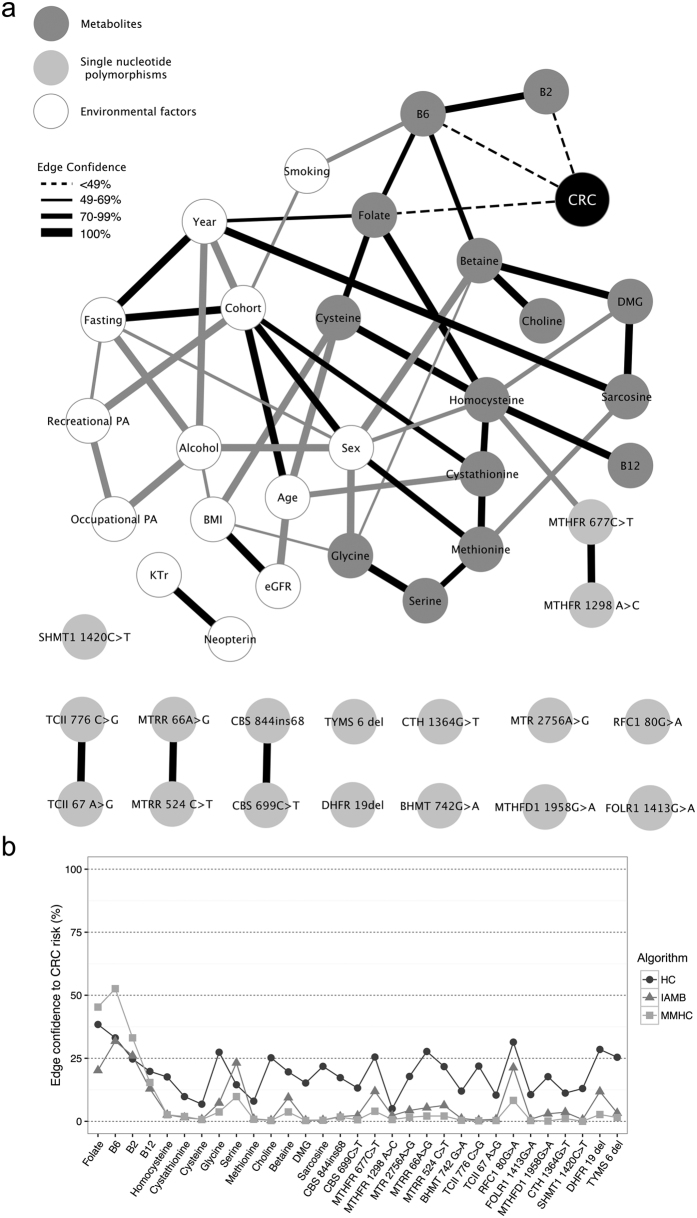Figure 2.
Bayesian network learning results (a) Bayesian network of plasma one-carbon metabolites divided into quartiles, related SNPs, and other environmental variables in relation to colorectal cancer (CRC) estimated with the HC algorithm. Analyses were made on 560 cases and 1090 controls (after excluding 53 cases and 100 controls with incomplete 1CM data). Edges in black were also present in IAMB and/or MMHC networks, whereas gray edges were present only in the HC network. Thicker edges indicate higher confidence (i.e., the frequency of the relation in the 1000 bootstrap networks). The estimated confidence thresholds for inclusion in the networks were: HC = 49%, IAMB = 50%, MMHC = 51%. The strongest independent associations with CRC risk, with edge confidences consistently higher compared to other variables for all algorithms, are marked with dashed edges. (b) Edge confidences of relations between CRC and 1CM variables for networks learned using the HC, IAMB, and MMHC algorithms. A higher edge confidence indicates a stronger independent association. Abbreviations: PA, physical activity; eGFR, estimated glomerular filtration rate; KTr, kynurenine/tryptophan ratio.

